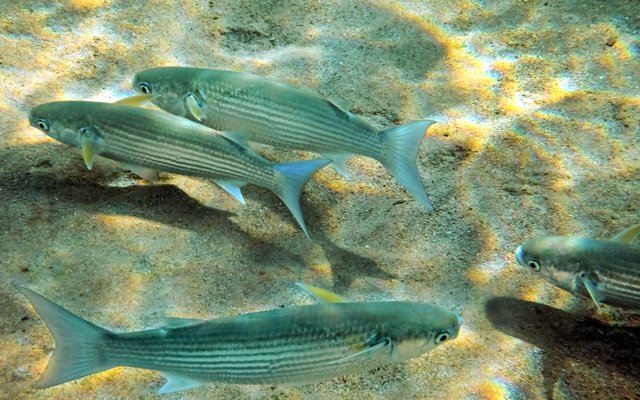Some species in fish farms suffer from severe reproductive dysfunctions which make them difficult to breed and raise. An example is flathead grey mullet (Mugil cephalus) in which males do not produce fluid semen and females stop the maturation in the first stages of the development of the gonads.
Researchers from IRTA and Rara Avis Biotec published a methodology that ensures the sexual maturation of adults and guarantees the production of high-quality gametes, eggs and larvae. The methodology would allow closing the biological cycle of the species and farm it.
Fish reproduction consists of two stages, gametogenesis and maturation. These stages are controlled by different reproductive hormones, gonadotropins (Gths) and steroids. The study showed for the first time that using new recombinant gonadotropin hormones (rGths), recombinant follicle-stimulating hormones (rFsh) and luteinizing hormones (rLh) in fish induces gametogenesis from the early stages and produces viable mature sperm and eggs.
The hormones used were based on the DNA of those that the mullet naturally has since the hormones responsible for breeding are specific to each fish species. “With this methodology, we can control the oogenesis of females and the spermatogenesis of males from the initial phases (previtellogenesis and spermatogonia) until the end of maturation and spawning. It is an advance compared to previous studies that used hormones from other animals and that obtain lower spawning rates and quality,” said Neil Duncan, researcher at IRTA.
The treatment with new recombinant gonadotropin hormones, which lasted twelve weeks, not only induced gametogenesis but also induced reproductive behavior in both sexes. “This is important to achieve successful courtship and fertilization of the released gametes, although the presence of good-quality males in the tank with fluid semen may also have been a decisive factor for spawning success,” said researcher Sandra Ramos-Júdez.
“This methodology could be applied to other fish species that have severe reproductive dysfunctions using their corresponding hormones, such as high-value ornamental species or threatened and endangered fish species that are bred in captivity for conservation,” said Ignacio Gimenez, manager of Rara Avis Biotec company.
Check out the study here.













